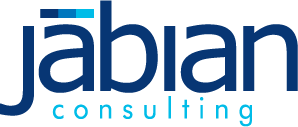Written collectively by the Jabian PEO and CX teams
At Jabian, we take a holistic approach to process improvement. When analyzing and redesigning a process, we consider people, process, technology, and leadership. We typically focus on the people who are executing the process. However, for customer-facing processes, the customers of the process are critical. So, for customer-facing processes we employ a combination of both process maps and journey maps to take a lens of improving the customer experience (CX), while redesigning the overall process.
Understanding both tools is important to appreciating how they complement each other. Typically, process improvement focuses on optimizing the quality, cost, and speed by using process maps to document and analyze the sequence of activities. Customer journey mapping, on the other hand, documents a sequence of interactions.
Let’s dive a little deeper –
Journey maps take an outside-in perspective and focus on the persona, a customer, or a group of customers with similar preferences, needs, and objectives. Journey mapping identifies interaction points with customers and how those interactions impact their experience. This serves as the basis to determine ways to “win” those interactions by meeting and exceeding customer expectations.
Mapping out a process flow enables a business to identify complexity, waste, and friction points. It can serve as the basis for analysis to re-design or re-engineer the process to be more effective and efficient.
Layering both tools helps determine how to rethink processes to create a more efficient flow of activities and enhanced interactions to create a better experience. With customer-facing processes, we can leverage customer preferences as guidelines and boundaries to optimize the process for efficiency, effectiveness, and maximizing value. This can include considering customer sentiment and designing with empathy for the end customers’ needs, motivators, and expectations.
For example, self-checkout is a process improvement employed in many retail stores, including some restaurants. From a process standpoint, self-checkout increases efficiency and removes waste by shifting the flow of activities and reallocating resources. From an interaction standpoint, the last interaction with the customer, check-out, is optimized with less idle waiting for customers who prefer a sense of speed. By adding self-checkout registers and allowing customers to complete the transaction independently, the bottleneck and pain point are removed, improving the process and the customer experience.
With the right tool set, creating an efficient process does not need to come at the expense of the customer experience.
Jabian’s methodologies and insights for Process Engineering and Optimization and CX.
